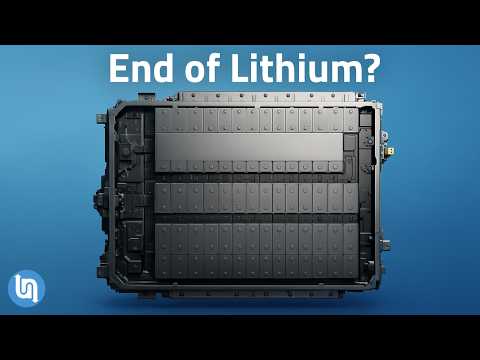Why the Biggest Battery Company CATL is Betting Against Lithium.
Contemporary Amperex Technology Co. Limited (CATL), the world’s largest lithium-ion battery manufacturer, has dominated the electric vehicle (EV) battery market for years. With a 37% global market share in 2024 and partnerships with major automakers like Tesla, Volkswagen, and Ford, CATL’s influence is undeniable.
Yet, in a surprising pivot, the company is placing a significant bet against lithium, its core material, by heavily investing in sodium-ion battery technology. This shift has sparked curiosity and debate: why is the lithium giant hedging its bets on an alternative? Let’s explore the reasons behind CATL’s bold move and what it means for the future of energy storage.
The Lithium Legacy and Its Challenges
Lithium-ion batteries have been the backbone of the EV revolution, prized for their high energy density, which allows vehicles to travel farther on a single charge. CATL’s expertise in lithium-ion technology has made it a linchpin in the global push for electrification, powering millions of EVs and energy storage systems. However, lithium-ion batteries face persistent challenges that threaten their long-term dominance.
- First, cost and supply chain volatility are major hurdles. Lithium prices, while down from their 2022 peak, remain subject to wild swings due to mining constraints and geopolitical tensions. In early 2025, CATL’s partner, Jiangsu Lopal Tech Co., noted that lithium prices could fluctuate between $9,000 and $11,800 per ton in the near term, reflecting ongoing market instability. Over 60% of global lithium processing occurs in China, but rising export restrictions and trade disputes—such as U.S. tariffs and China’s proposed curbs on battery tech—complicate access to raw materials.
- Second, environmental and ethical concerns loom large. Lithium mining is water-intensive and often disrupts ecosystems, particularly in regions like South America’s Lithium Triangle. Reports estimate that producing one ton of lithium requires up to 500,000 gallons of water, raising red flags in water-scarce areas. Additionally, cobalt, a common component in lithium-ion batteries, is frequently linked to unethical mining practices, including child labor in the Congo.
Finally, performance limitations under extreme conditions, like low temperatures, reduce lithium-ion battery efficiency, a critical issue for EVs in colder climates. These challenges have pushed CATL to explore alternatives that could complement or even replace lithium-ion technology in certain applications.
Sodium-Ion: The New Contender
Enter sodium-ion batteries, CATL’s chosen alternative. Unlike lithium, sodium is abundant and inexpensive, derived from common salt and widely available globally. This makes sodium-ion batteries less vulnerable to supply chain disruptions and price volatility. CATL’s co-founder, Robin Zeng, made waves in a November 2024 Reuters interview by suggesting that sodium-ion batteries could capture up to half the EV battery market, a bold claim for a technology still in its early stages.
CATL isn’t just talking the talk. The company has already integrated sodium-ion technology into its Freevoy battery pack, a hybrid system combining lithium and sodium cells for long-range EVs. In 2025, CATL plans to launch a second-generation sodium-ion battery with an energy density exceeding 200 Wh/kg—a significant leap from the first generation’s 160 Wh/kg, though still below lithium-ion’s 300 Wh/kg benchmark. This progress signals CATL’s confidence in closing the performance gap.
Why Sodium? CATL’s Strategic Calculus
CATL’s pivot to sodium-ion technology is driven by a mix of practical and strategic considerations, each addressing lithium’s vulnerabilities while positioning the company for long-term dominance.
Cost Advantage and Scalability
Sodium’s abundance translates to lower production costs. Unlike lithium, which requires complex mining and refining, sodium can be sourced sustainably with minimal environmental impact. For CATL, this means cheaper batteries for budget-conscious consumers and manufacturers, especially in markets like China, where EV adoption is surging. By 2024, China accounted for 11 million EV sales, a 40% year-on-year increase, and affordable sodium-ion batteries could accelerate this trend.
Diversifying Risk
CATL’s heavy reliance on lithium exposes it to market and geopolitical risks. The U.S. Department of Defense’s 2025 designation of CATL as a “Chinese Military Company” threatens its North American operations, while trade tensions could limit access to Western markets. Sodium-ion batteries, with their simpler supply chain, offer a hedge against such disruptions. CATL’s global expansion, including plants in Hungary and Spain, could leverage sodium-ion tech to sidestep lithium-related trade barriers.
Market Segmentation
Not every EV needs lithium-ion’s high energy density. Smaller vehicles, urban commuters, and grid storage systems can function effectively with sodium-ion’s lower density but superior affordability and safety. Sodium-ion batteries are less prone to thermal runaway, reducing fire risks—a key concern after high-profile lithium-ion battery fires. CATL’s Freevoy pack targets mid-range EVs, blending lithium’s range with sodium’s stability, showing how the two technologies can coexist.
Sustainability and Public Perception
As environmental regulations tighten, CATL faces pressure to reduce its ecological footprint. Sodium-ion batteries align with global sustainability goals, requiring less energy-intensive processing and avoiding cobalt’s ethical issues. By championing sodium, CATL can bolster its reputation as an innovator, appealing to eco-conscious consumers and investors.
The Road Ahead: Sodium’s Potential and Pitfalls
CATL’s sodium-ion gamble is not without risks. The technology’s lower energy density remains a barrier for long-range EVs, where lithium-ion still reigns supreme. While CATL’s second-generation sodium-ion battery shows promise, catching up to lithium’s performance will take years of R&D. Competitors like BYD, which holds a 17% market share and is also exploring sodium-ion, could challenge CATL’s lead if they innovate faster.
Moreover, the EV market’s growth isn’t guaranteed. A 2025 New York Times report highlighted how U.S. tariffs and a potential slowdown in EV demand could dampen battery investments. If sodium-ion fails to scale quickly, CATL risks diverting resources from its lithium-ion cash cow at a critical time.
Yet, CATL’s track record suggests it’s playing the long game. Its $5 billion Hong Kong listing in 2025 underscores its financial muscle, while partnerships with NIO, Sinopec, and Didi for battery-swapping networks show its knack for ecosystem-building. By integrating sodium-ion into these networks, CATL could create a self-reinforcing cycle of adoption.
A Balanced Bet or a Bold Leap?
CATL’s shift toward sodium-ion batteries isn’t a rejection of lithium but a strategic diversification. Lithium-ion will likely dominate high-end EVs for the foreseeable future, but sodium-ion’s cost, safety, and sustainability advantages make it a compelling alternative for mass-market applications. CATL’s ability to innovate across both technologies positions it to weather market volatility and geopolitical storms.
The bigger question is whether sodium-ion can live up to Zeng’s lofty prediction of capturing half the market. If CATL’s second-generation battery delivers as promised, and if global EV adoption continues its upward trajectory, sodium-ion could redefine energy storage. For now, CATL’s bet against lithium reflects a pragmatic truth: in a rapidly evolving industry, even the biggest players must adapt to stay ahead.
By balancing lithium’s proven strengths with sodium’s untapped potential, CATL is not just hedging its bets—it’s shaping the future of mobility. Whether sodium-ion becomes a game-changer or a niche player, CATL’s willingness to challenge its own dominance proves why it remains the world’s battery kingpin.








